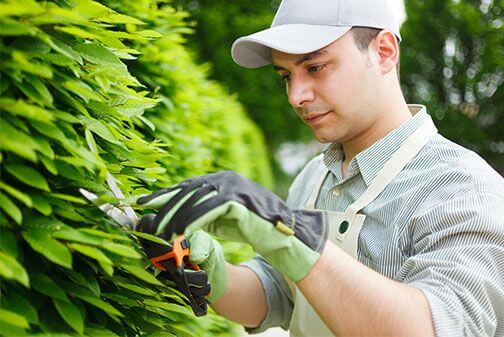Pioneering Waste Conversion Technologies
Posted on 21/12/2024
In a world grappling with mounting waste and environmental degradation, pioneering waste conversion technologies are stepping up as harbingers of hope. These advanced technologies are transforming waste into valuable resources, contributing to a circular economy, and reducing our carbon footprint. This article delves into various groundbreaking methods reshaping our approach to waste management, showcasing how they are revolutionizing the way we handle waste.
Understanding Waste Conversion Technologies
Waste conversion technologies encompass a broad range of processes designed to divert waste from landfills and convert it into useful materials, energy, and other valuable products. These technologies fall into various categories, including thermal, biological, and chemical processes. Each method has its unique advantages and applications, making them suitable for different types of waste.

Thermal Waste Conversion Technologies
Thermal waste conversion involves using high temperatures to decompose waste materials, essentially breaking them down at a molecular level. Some of the most prominent thermal waste conversion methods include:
1. Incineration
Incineration is one of the earliest forms of waste-to-energy technology. It involves burning waste at high temperatures to produce heat, which can be converted into electricity. Modern incineration plants are equipped with advanced emission control systems to minimize environmental pollutants. While it effectively reduces the volume of waste, the high investment and operational costs, along with the release of greenhouse gases, are notable drawbacks.
2. Pyrolysis
Pyrolysis is a process that thermally decomposes organic material in the absence of oxygen. This method converts waste into solid, liquid, and gaseous products, including biochar, bio-oil, and syngas. The products derived from pyrolysis have multiple applications, such as soil amendment, fuel, and chemical feedstocks. Pyrolysis offers a cleaner alternative to traditional incineration, with lower emissions and the potential for energy recovery.
3. Gasification
Gasification involves converting organic materials into synthetic gas (syngas) through partial oxidation. The resulting syngas, composed mainly of hydrogen and carbon monoxide, can be utilized to generate electricity, produce biofuels, or serve as a chemical feedstock. Gasification provides a versatile waste management solution with the potential to process various types of waste, including municipal solid waste, biomass, and industrial waste.
Biological Waste Conversion Technologies
Biological waste conversion utilizes natural biological processes to break down organic waste materials, converting them into valuable products like biogas, compost, and biofuels. Some prominent biological waste conversion methods include:
1. Anaerobic Digestion
Anaerobic digestion is a process where microorganisms break down organic matter in the absence of oxygen, producing biogas and digestate. Biogas, composed mainly of methane and carbon dioxide, can be used to generate electricity, heat, or be upgraded to renewable natural gas. The digestate, rich in nutrients, can be used as a fertilizer. Anaerobic digestion is widely used for managing agricultural waste, manure, and food waste, offering a sustainable solution for organic waste management.
2. Composting
Composting is a natural process that decomposes organic material aerobically, resulting in nutrient-rich compost. This compost can be used to enhance soil health and fertility. Composting is one of the simplest and most eco-friendly waste management practices, suitable for a wide range of organic waste including food scraps, yard waste, and agricultural residues. It not only reduces the volume of waste but also returns valuable nutrients to the soil, promoting sustainability in agriculture.
3. Vermicomposting
Vermicomposting uses earthworms to break down organic waste, resulting in high-quality worm castings or vermicompost. Vermicompost is a potent soil amendment and fertilizer, enhancing soil structure, nutrient availability, and microbial activity. It is particularly effective for managing kitchen waste, paper, and other biodegradable materials. Vermicomposting is a low-tech, sustainable method that is accessible to individuals, communities, and farms.
Chemical Waste Conversion Technologies
Chemical waste conversion employs chemical reactions to transform waste materials into valuable products. These technologies are particularly effective for dealing with complex or hazardous waste. Some of the pioneering chemical waste conversion methods include:
1. Hydrothermal Liquefaction
Hydrothermal liquefaction (HTL) utilizes high temperature and pressure in the presence of water to convert wet biomass into bio-crude oil. The bio-crude can be further refined into biofuels, such as biodiesel and bio-jet fuel. HTL offers an efficient method for converting wet organic waste, such as algae, agricultural residues, and sewage sludge, into renewable energy carriers, providing a sustainable alternative to fossil fuels.
2. Chemical Recycling
Chemical recycling breaks down plastics and other materials into their basic chemical constituents through processes like depolymerization, pyrolysis, and solvolysis. These monomers and feedstocks can then be re-polymerized to create new plastics or other materials. Chemical recycling offers a solution to the growing plastic waste crisis, enabling the recycling of materials that are difficult to process using traditional mechanical recycling methods.
Electrochemical Waste Conversion Technologies
Electrochemical methods use electrical energy to drive chemical reactions, offering innovative solutions for waste management. They are particularly promising for converting waste into high-value chemicals and energy. One such technology includes:
1. Electrochemical Reduction
Electrochemical reduction involves using electrical current to convert carbon dioxide (CO2) and other waste gases into valuable chemicals like ethanol, ethylene, and other hydrocarbons. This technology holds great potential for converting greenhouse gases into useful products, thus contributing to carbon capture and utilization efforts.

Challenges and Future Prospects
Despite the promising advancements in waste conversion technologies, several challenges remain. These include high initial investment costs, technological complexities, regulatory hurdles, and the need for public acceptance. Furthermore, integrating these technologies into existing waste management infrastructure requires careful planning and collaboration among stakeholders.
However, the future looks promising as research and development continue to enhance the efficiency, scalability, and cost-effectiveness of these technologies. Innovations in AI and machine learning, coupled with advances in material science and engineering, are expected to drive further breakthroughs in waste conversion.
Conclusion
Pioneering waste conversion technologies are revolutionizing our approach to waste management, offering sustainable solutions to the growing waste problem. By transforming waste into valuable resources and energy, these technologies contribute to a circular economy, reduce greenhouse gas emissions, and minimize environmental pollution. As we continue to innovate and overcome existing challenges, the widespread adoption of these technologies holds the potential to create a cleaner, greener, and more sustainable future for generations to come.
In embracing these trailblazing technologies, society can turn waste from a burdensome problem into a valuable asset, heralding a new era of sustainability and environmental stewardship.










